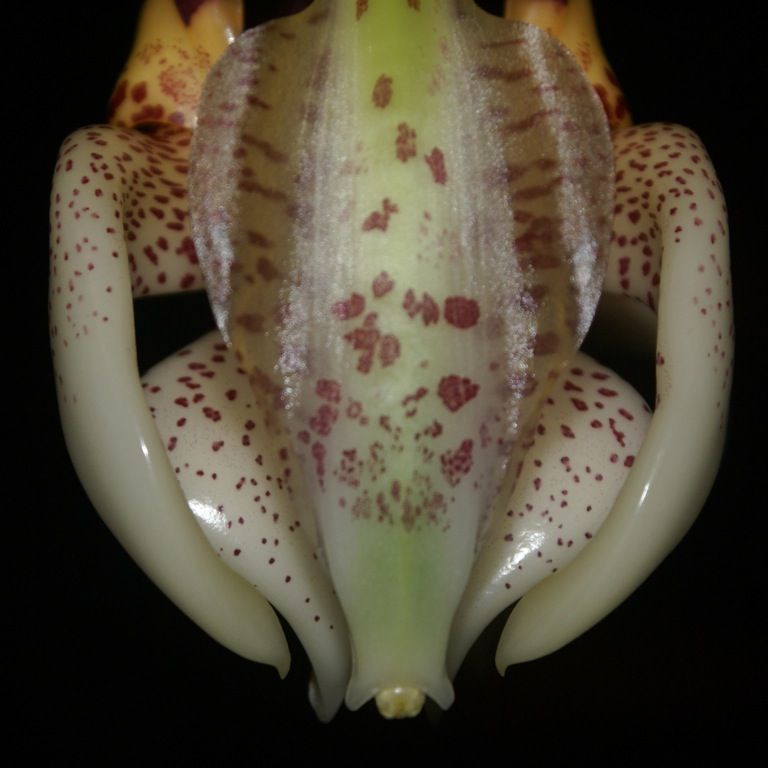Hey Everyone,
I have been delighting in the presence of the blooms on my Stanhopeas this past week or two. The first to open was my Stanhopea tigrina that I bought last year. It was in flower at the time and sadly I have had to wait a whole calendar year before being able to ensconce myself in it's heady aroma.
I figured I may as well go straight to the top when it comes to orchid species related information, and went to the Kew Royal Botanic Gardens website to find me some info on this truly glorious plant.
Sir William Hooker, a previous director of The Royal Botanic Gardens Kew, named the genus Stanhopea, containing over 60 species, most of which occur in tropical South and Central America., after the Right Honerable Phillip Henry Stanhope. Stanhope was the President of the Royal Medico-Botanical Society of London from 1829 to 1837.
Stanhopea tigrina in particular is only found growing in Mexico, and was first decribed by James Bateman (1811-1897) in 1837. Bateman fist described S. tigrina in his 10 volume work The Orchidaceae of Mexico and Guatemala.
"Bateman was Vice-President of the Royal Horticultural Society and a keen grower of tropical orchids. Bateman’s books were instrumental in stimulating interest in orchids and orchid growing in Britain in the 19th century. The type plant he described was collected by John Henchman in Mexico, and the image in Curtis’s Botanical Magazine shows a plant painted by Walter Hood Fitch in 1850, by which time ‘the species is now not uncommon in our collections, and is said to have been introduced to them by Messrs. Low, of Clapton, from Xalapa in Mexico." (Kew, 2012).
"Stanhopea tigrina is an epiphytic orchid, with upright, oblong leaves (35 cm long and 10 cm wide), each arising from single pseudobulb, which form tight clusters. The large flowers are scented and produced in groups of 2–4 in a pendulous inflorescence up to 15 cm long. Individual flowers have yellow petals and sepals and are heavily spotted and streaked purplish-brown. Each sepal is reflexed (bent backwards) and measures up to 8.0 cm long and 5.0 cm wide. The petals are around 7.0 cm long and 1.5 cm wide. Pollination is by male euglossine bees (also known as orchid bees), which collect floral fragrance compounds from the lip of the flowers." (Kew, 2012)
I currently have my
S. tigrina growing in a plastic hanging basket with bark and styrofoam cubes, but am thinking of moving it to either Coconut Husk Chips, or Sphagnum Moss and Perlite so as to supply more water to the plants as my experimental plants seem to greatly appreciate it. Be sure to check out the photos below
Happy Gardening Everyone,
Michael
 |
| Whole Plant |
 |
| flower spike sheath detail |
 |
| view from below |
 |
| Reproductive organs |
 |
| "throat" detail |
 |
| Petal detail |
 |
| Petal Detail |
 |
| Flowers |
 |
| lip/beak detail |
 |
| lip/beak detail |















No comments:
Post a Comment
Hi, I'd love it if you'd make a comment. I enjoy hearing what you think and all comments are read, and replied to, to the best of my ability at the time.
Happy Gardening :)